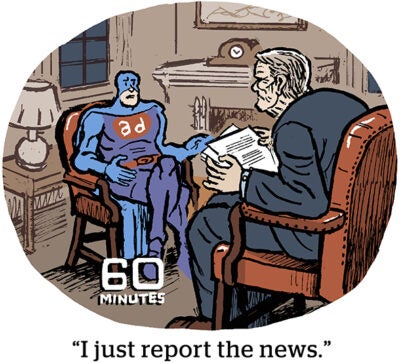“Data-Driven Thinking” is written by members of the media community and contains fresh ideas on the digital revolution in media.
Today’s column is written by Jay Friedman, president and partner at Goodway Group.
Some kids go straight from high school to Harvard. Others take a gap year to “find themselves,” tinker in their friend’s garage or simply explore the world. Many of those same kids arrive at college a year later more focused and well-rounded.
When the California Consumer Privacy Act (CCPA) goes into effect Jan. 1, it will launch independent ad tech on its own type of “gap year” in which it must interpret the law’s evolving nuances and focus on innovation before it’s ready for the big day – not for college but for replacing behavioral targeting in a meaningful way.
This period of reflection and innovation will force the industry to mature significantly in ways that set it up for enduring success.
A new approach to identity
The main goal for 2020 is to prepare for a cookieless future. The difference between the past and the year ahead is that ad tech will focus less on creating workarounds for walled gardens and more on innovating a true solution for identity.
The very crux of walled garden success is identity, aggregated and augmented by their properties. As the cookie crumbles and device ID sharing is discontinues, independent ad tech is finally getting serious about replacing the cookie matching and probabilistic identity graph patchwork with persistent ID frameworks that provide authenticated users’ privacy-compliant data that marketers can use in the buying platform of their choice.
There are a handful of IDs competing to be the standard. It’s a manageable number for a DSP to facilitate, and I believe we’ll ultimately look at no more than five across the globe.
Part of the reason I believe persistent, privacy-friendly IDs will flourish is that identity players finally got smart and stopped bragging about how they’re circumventing Apple’s Intelligent Tracking Prevention and other browser controls. Among the methods being used today, I believe we’re close to finding at least one solution that can’t be locked down or out by browsers without disabling major user functionality.
A new way to put identity into action
After innovation comes activation. In 2020 and beyond, independent ad tech will have to focus on putting viable identity solutions into action. Our successful path forward consists of three major milestones.
First, we have to solve the technical problem: storing identity in a way that is woven into the user experience and can be used across publishers. It is hard enough making a profit as a publisher today, and today publishers sell user data. This revenue source is too vital, and necessity drives invention.
Second, the ID companies need to convert to this ID solution from their current cookie and device ID frameworks. Today’s shared identity players talk a big game, but ultimately they rely heavily on cookies and IDs that aren’t promised to be around in the future.
Finally, this solution, and the data selling behind it, will need to be tested in court or explicitly approved by lawmakers. Lawyers can review and debate the letter of the law ad nauseum, but until a case goes to court and case law is created, all of our guesses are just that.
The first two steps will be largely done in 2020. The final step will take three to five years in the United States and perhaps slightly less time in Europe due to its head start with GDPR.
Several weeks ago, Sarah Sluis of AdExchanger posed a question asking how ad tech will address a cookieless future. It’s a great question and one that every company in the ecosystem should be asking themselves. Are they ready? Taking a gap year can help to figure things out.
When all is said and done, marketers will have to choose whether they put their money into walled gardens or independent players. But at that point, the choice will be about product, service and performance, and much less about owned assets.
Follow Jay Friedman (@jaymfriedman) and AdExchanger (@adexchanger) on Twitter.















